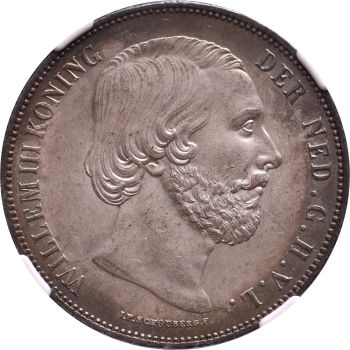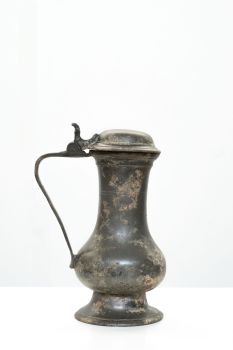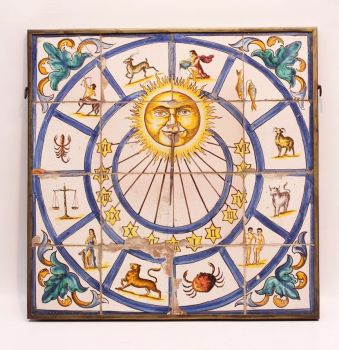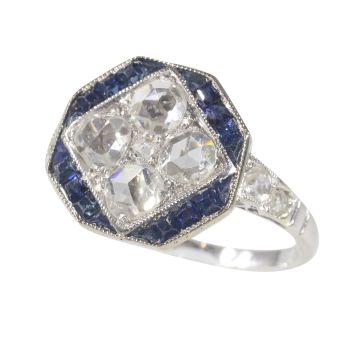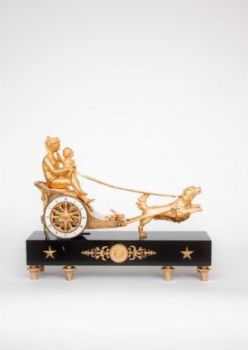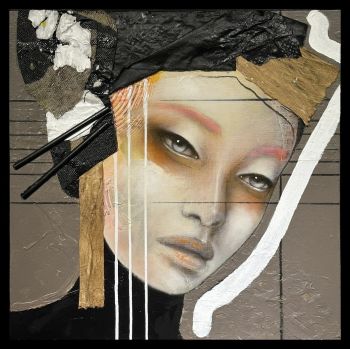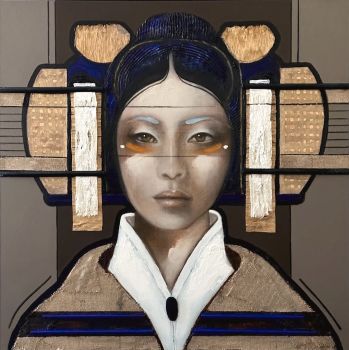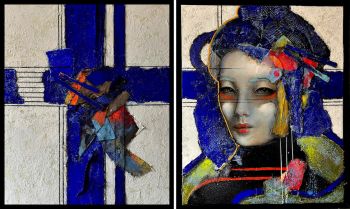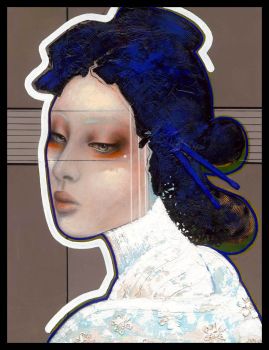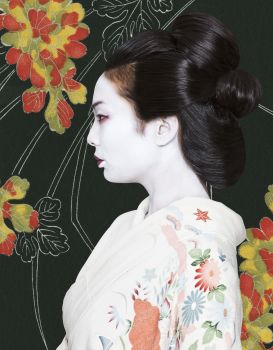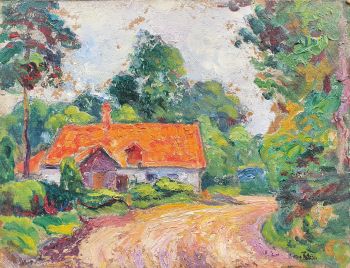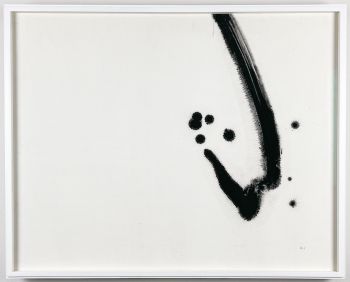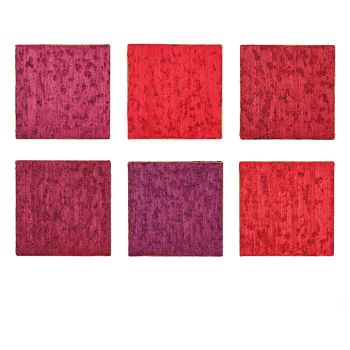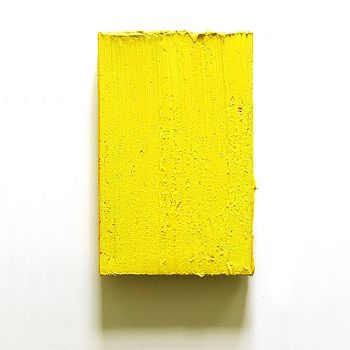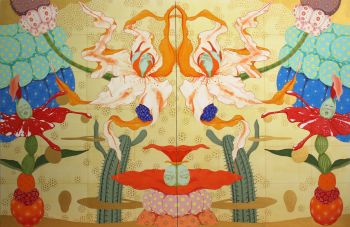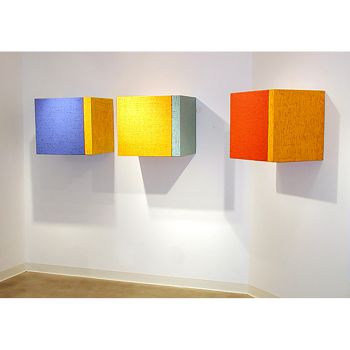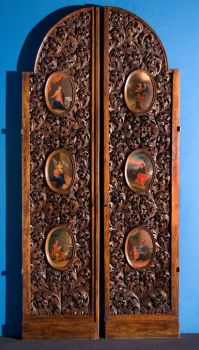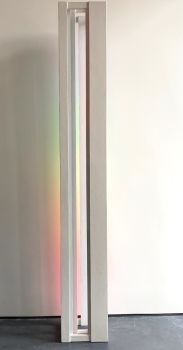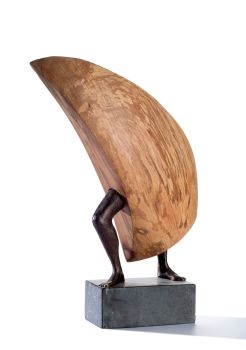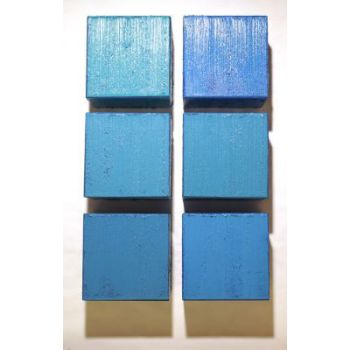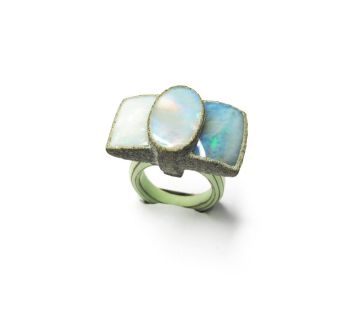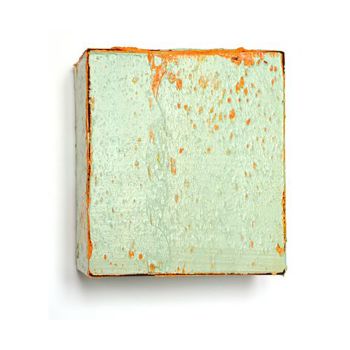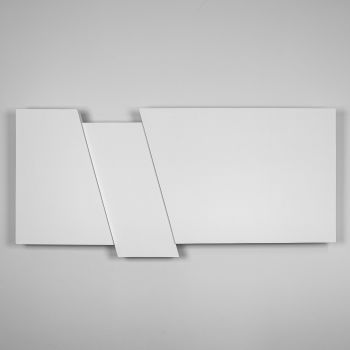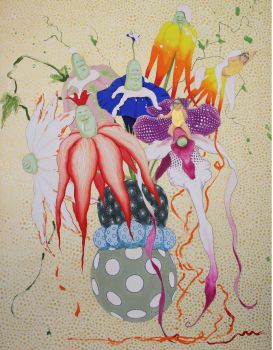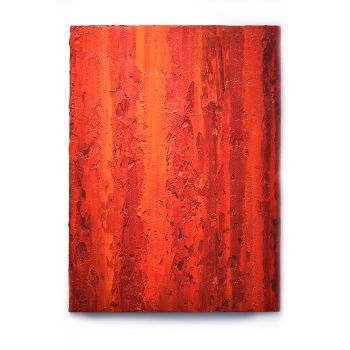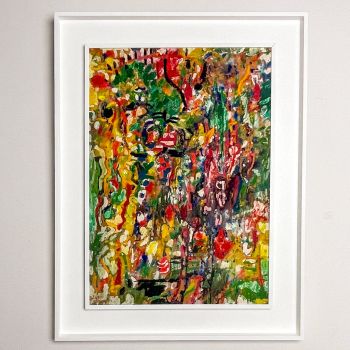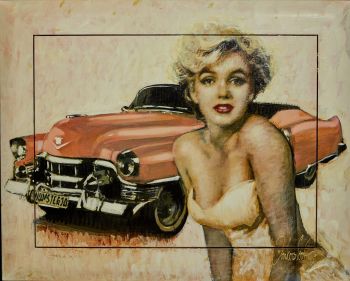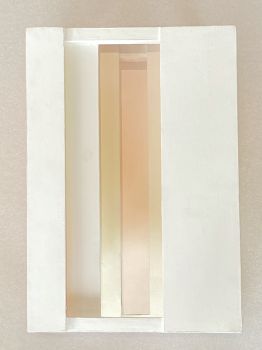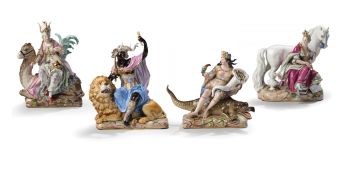EEN JAPANS HOUTEN "EDICT BOARD", KOSATSU 1685
Onbekende Kunstenaar
Hout
Prijs op aanvraag
Zebregs & Röell - Fine Art - Antiques
- Over kunstwerkOf rectangular shape with a shallow-pitched roof, the wood left bare but for a long inscription in ink prohibiting the practice of Christianity and announcing rewards for the capture of Christians of various stature, with a signature for the Governor, Bugyo, and dated Jokyo ninen juichigatsu (November 1685).
H. 47.3 cm x W. 85.5 cm
Note:
Christianity was banned in Japan in the 1630s, and these edict boards were displayed all over Japan after that. However, few have survived due to centuries of rain and wind damaging the wood.
Christianity first appeared in Japan with the arrival of the Portuguese in 1543 and in particular with the arrival of the Jesuit missionary Franciscus Xaverius in 1549. The Jesuits focused their missionary efforts successfully at the higher strata of society, with Daimyo families in Kyushu such as the Satsuma clan joining the faith, partly to obtain imported goods (such as guns) the Portuguese Jesuits were trading in. However the Shogunate, military rulers of Japan, increasingly distrusted the Christian community and after the Shimabara rebellion of 1637-38 during which Christian peasants rebelled against the Shogunate, Shogun Tokugawa fully banned Christianity in Japan.
Other factors led to the ban, such as fear that the missionaries were paving the way for a foreign occupation of Japan and that the converts were spies for foreign powers. The proclamation of 1639 altogether outlawed the promulgation of and adherence to the Christian religion. It also marked the beginning of a long period of anti-Christian persecutions that lasted for two and a half centuries. Signboards such as the present one were set up all over the country, encouraging people to report Christians to the authorities for various financial rewards (500 pieces of silver for a priest and 100 for an ordinary convert). Being found out as a Christian involved the death penalty, sometimes by crucifixion, and symbols and objects used for Christian worship were destroyed or desecrated. Still after the Meiji restoration and the re-establishment of religious freedom after 1867, more than 30.000 “hidden Christians” came out of hiding.
Another “Edict board” relating to the prohibition of Christianity in Japan and dated 1682, is in the collection of the British Museum (acc.n.1895,0721.1). - Over kunstenaar
Het kan voorkomen dat een kunstenaar of maker onbekend is.
Voor sommige werken is het niet te bepalen door wie het gemaakt is of dat het is gemaakt door (een groep) ambachtslieden. Voorbeelden zijn beelden uit de Oudheid, meubels, spiegels of handtekeningen die vaak niet duidelijk of leesbaar zijn. Maar ook sommige werken zijn helemaal niet gesigneerd.
Ook kunt u de volgende beschrijving vinden:
•"Toegeschreven aan …." waarschijnlijk een werk van de kunstenaar maar niet zeker of gedeeltelijk
•“Atelier van ….” of werkplaats van” een werk uitgevoerd in het atelier of atelier van de kunstenaar, eventueel onder zijn toezicht
•“Cirkel van ….” een werk uit de periode van de kunstenaar die zijn invloed laat zien, nauw verbonden met de kunstenaar maar niet noodzakelijkerwijs zijn leerling
•“Stijl van ….” of “Volger van ….” een werk uitgevoerd in de stijl van de kunstenaar, maar niet noodzakelijk door een leerling; kan eigentijds of bijna eigentijds zijn
•“Wijze van ….” een werk in de stijl van de kunstenaar maar van latere datum
•"Na …." een kopie (van welke datum dan ook) van een werk van de kunstenaar
•“Getekend…”, “Gedateerd….” of “Ingeschreven” dan is het werk gesigneerd/ gedateerd/ ingeschreven door de kunstenaar. De toevoeging van een vraagteken duidt op een element van twijfel
•"Met handtekening ...", "Met datum ...", "Met opschrift..." of “Draagt signatuur/datum/opschrift” dan is de handtekening/datum/opschrift toegevoegd door iemand anders dan de kunstenaar
Bent u geïnteresseerd om dit kunstwerk te kopen?
Artwork details
Related artworks
Onbekende Kunstenaar
Een zeldzame filigrana a retortoli bokaal1550 - 1600
Prijs op aanvraagPeter Korf de Gidts - Antiquairs
1 - 4 / 12Onbekende Kunstenaar
AN IVORY NETSUKE OF A DUTCHMAN FROLICKING WITH A SMALL BOY18th century
Prijs op aanvraagZebregs & Röell - Fine Art - Antiques
Onbekende Kunstenaar
The Stamford Raffles Secretaires.1800 - 1813
Prijs op aanvraagZebregs & Röell - Fine Art - Antiques
Onbekende Kunstenaar
A RARE LARGE JAPANESE LACQUERED LEATHER TELESCOPE1750 - 1800
Prijs op aanvraagZebregs & Röell - Fine Art - Antiques
Onbekende Kunstenaar
A rare Japanese export lacquer medical instrument box1650 - 1700
Prijs op aanvraagZebregs & Röell - Fine Art - Antiques
Onbekende Kunstenaar
EEN JAPANSE KLEINE SAWASA 'PERZIK-VORMIGE' KROESKOPearly 18th
Prijs op aanvraagZebregs & Röell - Fine Art - Antiques
Onbekende Kunstenaar
A SMALL IVORY NETSUKE OF A DUTCHMAN WITH A DRUM1750 - 1800
Prijs op aanvraagZebregs & Röell - Fine Art - Antiques
Onbekende Kunstenaar
EEN IVOREN NETSUKE VAN EEN NEDERLANDER MET EEN HAAN18th century
Prijs op aanvraagZebregs & Röell - Fine Art - Antiques
1 - 4 / 19Onbekende Kunstenaar
EEN VERGULD-ZILVER SRI LANKAANSE DOCUMENTEN ROLCONTAINER19th century
Prijs op aanvraagZebregs & Röell - Fine Art - Antiques
Onbekende Kunstenaar
EEN IVOREN NETSUKE VAN EEN NEDERLANDER MET EEN HAAN18th century
Prijs op aanvraagZebregs & Röell - Fine Art - Antiques
Onbekende Kunstenaar
A SMALL IVORY NETSUKE OF A DUTCHMAN WITH A DRUM1750 - 1800
Prijs op aanvraagZebregs & Röell - Fine Art - Antiques
Onbekende Kunstenaar
EEN JAPANS MODEL VAN EEN NORIMONO, EEN DRAAGSTOEL1650 - 1700
Prijs op aanvraagZebregs & Röell - Fine Art - Antiques
Onbekende Kunstenaar
The Stamford Raffles Secretaires.1800 - 1813
Prijs op aanvraagZebregs & Röell - Fine Art - Antiques
Onbekende Kunstenaar
EEN COLLECTIE VAN VIER SRI LANKAANSE IVOREN BIJBEL DOZEN18th century
Prijs op aanvraagZebregs & Röell - Fine Art - Antiques
Onbekende Kunstenaar
A RARE LARGE JAPANESE LACQUERED LEATHER TELESCOPE1750 - 1800
Prijs op aanvraagZebregs & Röell - Fine Art - Antiques
Onbekende Kunstenaar
AN IVORY NETSUKE OF A DUTCHMAN FROLICKING WITH A SMALL BOY18th century
Prijs op aanvraagZebregs & Röell - Fine Art - Antiques
1 - 4 / 24Onbekende Kunstenaar
A RARE LARGE JAPANESE LACQUERED LEATHER TELESCOPE1750 - 1800
Prijs op aanvraagZebregs & Röell - Fine Art - Antiques
Onbekende Kunstenaar
A large Japanese Imari porcelain 'VOC Groningen' dish1800 - 1925
Prijs op aanvraagZebregs & Röell - Fine Art - Antiques
Engelbert Kaempfer
ENGELBERT KAEMPFER BOEK1651 - 1716
Prijs op aanvraagZebregs & Röell - Fine Art - Antiques
1 - 4 / 24Onbekende Kunstenaar
Monumentale houten icoon: De heilige Nicolas van Mozaisk1600 - 1650
Prijs op aanvraagKunsthandel H.W.C. Dullaert Icons
1 - 4 / 24Onbekende Kunstenaar
Dutchmen in miniature (Netsuke)1700 - 1900
Prijs op aanvraagZebregs & Röell - Fine Art - Antiques
Onbekende Kunstenaar
BELANGRIJKE EN ZELDZAME GROTE INDIAANSE 'COMPANY STYLE' SCHILDERING OP IVOOR MET EEN VOORSTELLING VA1850 - 1900
Prijs op aanvraagZebregs & Röell - Fine Art - Antiques
 Gecureerd door
Gecureerd doorDanny Bree
Onbekende Kunstenaar
The Stamford Raffles Secretaires.1800 - 1813
Prijs op aanvraagZebregs & Röell - Fine Art - Antiques
1 - 4 / 12



